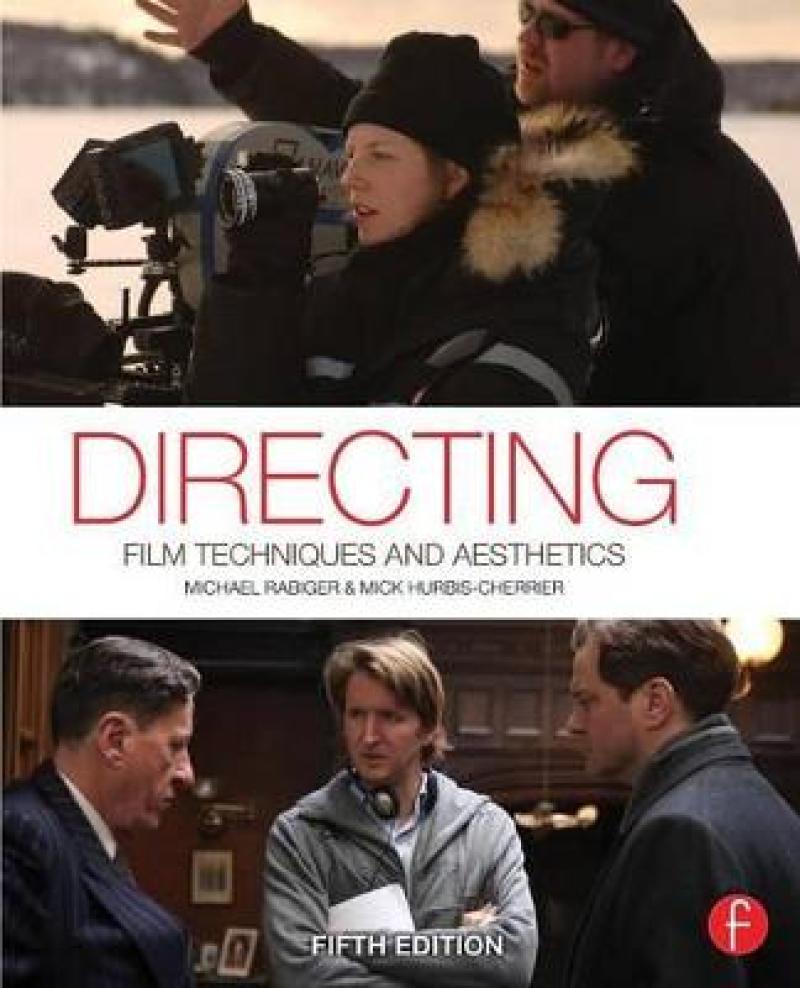This comprehensive manual has inspired tens of thousands of readers worldwide to realize their artistic vision and produce well-constructed films. Filled with practical advice on every stage of production, this is the book you will return to throughout your career.
Directing covers the methods, technologies, thought processes, and judgments that a director must use throughout the fascinating process of making a film. The core of the book is the human, psychological, and technical knowledge that every director needs, the enduring elements of the craft that remain vital.
Directing also provides an unusually clear view of the artistic process, particularly in working with actors and principle crew to achieve personally expressive storytelling and professionalism on any budget.
Directing explores in detailed and applicable terms how to engage with the conceptual and authorial sides of filmmaking. Its eminently practical tools and exercises show how to: discover your artistic identity; develop credible and compelling stories with your cast and crew; and become a storyteller with a distinctive voice and style.
The companion website includes teaching notes, dozens of practical hands-on projects and film study activities to help you master technical and conceptual skills, film analysis questionnaires, and all the essential production forms and logs.
New to the fifth edition
* Virtually every chapter has been revised, updated, and re-organized for a streamlined and integrated approach.
* Expanded sections on the basics of drama, including thorough analyses of recent films
* Discussions of the director’s approach to script analysis and development
* New discussion exploring the elements of naturalistic and stylistic aesthetic approaches.
* New discussion on the narrative power of lighting and the lens - including many recent film examples for shot size, perspective, focus and exposure
* Greater emphasis on the implications of composition, mise-en-scène, continuity shooting and editing, long take shooting, point-of-view sequences, and camera handling
* Expanded discussion of collaboration between the director and principle creative crew
* Updated coverage of workflow and comparative advantages to digital or film acquisition
* New section on film production safety, set protocol and etiquette
Les mer
Covers the methods, technologies, thought processes, and judgments that a director must use throughout the process of making a film. This title features expanded sections on pre-production, lenses, the emotional and tonal implications of shot size, composition, perspective, visual and sound proximity, and screencraft - the director's art.
Les mer
The world of the film directorDeveloping your path as a directorEssential elements of dramaShaping the story into dramaPlot, time, and structureScreenplay ground rulesRecognizing the superior screenplayScript analysis and developmentCinematic point of viewForm and styleTone: naturalistic and stylized approachesFilm languageThe frame and the shotThe moving cameraLanguage of the editThe human vantage of cinemativ languageExploring the scriptCastingActing fundamentalsDirecting actorsRehearsalsActing exercisesPlanning the visual designCoverage and the shooting scriptLine producing and logisticsDeveloping a production crewThe director and production crewOn set: production beginsDirecting on the setMonitoring continuity and progressPostproduction overviewEditing begins: getting to know the footageThe rough cutsGetting to fine cut and picture lockWorking with musicThe sound mixThe finishing touches
Les mer
"This terrific new edition, updating the classic, is one of the most complete manuals for directing you'll find. It gives both a broad overview and a detailed investigation of the craft; an explanation of the technology as well as an exploration of cinematic language and aesthetics.
So take this guide, add your own passion for filmmaking, and you'll have a solid foundation for any movie you make." - Nancy Savoca, director, Dogfight, Household Saints, 24 Hour Woman, and Union Square.
"While the basics of film aesthetics are well addressed, the value of this volume lies in its practical approach. Rabiger and Hurbis- Cherrier's firsthand experience allows them to describe the day- to- day of directing in simple, uncomplicated terms, appealing to both the novice and seasoned pro. . . The learning- by- doing method makes this across- the- board introduction accessible, practical and surprisingly entertaining."
- DGA Quarterly, http://www.dga.org/Craft/
Praise for the fourth edition
"Michael Rabiger's book "Directing: Film Techniques and Aesthetics" is the gold standard. His attention to the artistry of directing, not merely the technical concerns, puts him in the first rank. Rabiger's taste, knowledge, and insight are even more finely honed in this new edition. For the novice or the seasoned pro, this book is a joy and a must."
-Jared Rappaport, Chair of the Department of Cinema and Television Arts, California State University - Northridge
"As he has in previous editions of "Directing," Michael Rabiger continues to offer a complete and comprehensive overview of virtually all aspects of directing, from ideas to budgeting, from casting to editing. From my viewpoint there is no comparable book on the market."
-Eric Swelstad, Department Chair - Media Arts, Los Angeles Valley College
"A comprehensive introduction to directing that focuses heavily on the interpersonal and organizational aspects of the craft….For those about to embark on their debut short or feature, Directing offers a thorough manual that keeps one from having to learn everything the hard way." - American Cinematographer
Praise for the 3rd Edition:
"This is the single most valuable guide for both novice and seasoned practitioner…The new edition continues to be the comprehensive text for learning directing, integrating the rapid changes in technology with what was already a superbly detailed step-by-step text." - Jameson Goldner, professor of cinema at San Francisco State University
"This is the only comprehensive book on filmmaking that I recommend to my students", Jeremy Kagan, USC Graduate Film School; Artistic Director Sundance Institute
Les mer
Produktdetaljer
ISBN
9780240818450
Publisert
2013-01-22
Utgave
5. utgave
Utgiver
Vendor
Focal Press
Vekt
1161 gr
Høyde
235 mm
Bredde
191 mm
Aldersnivå
P, 06
Språk
Product language
Engelsk
Format
Product format
Heftet
